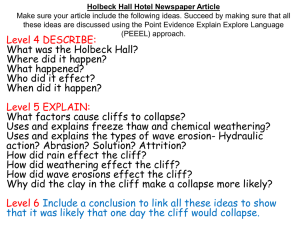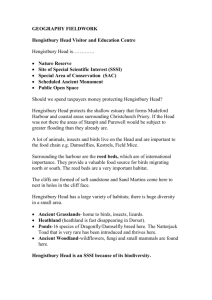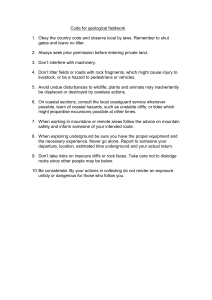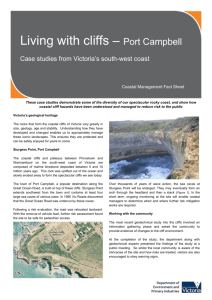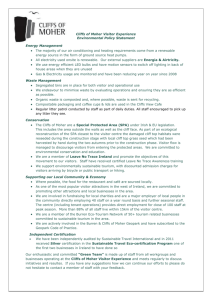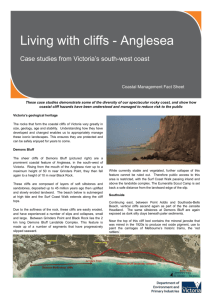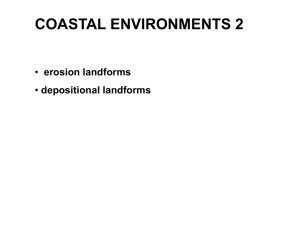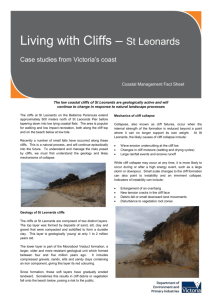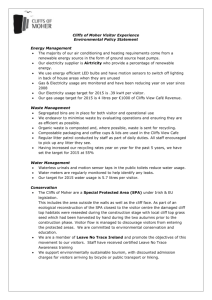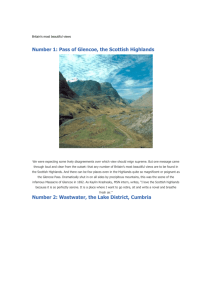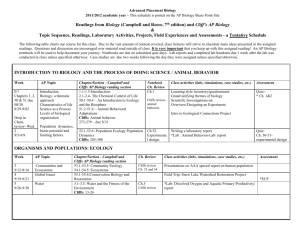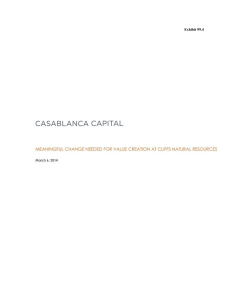Why do cliffs collapse?
advertisement
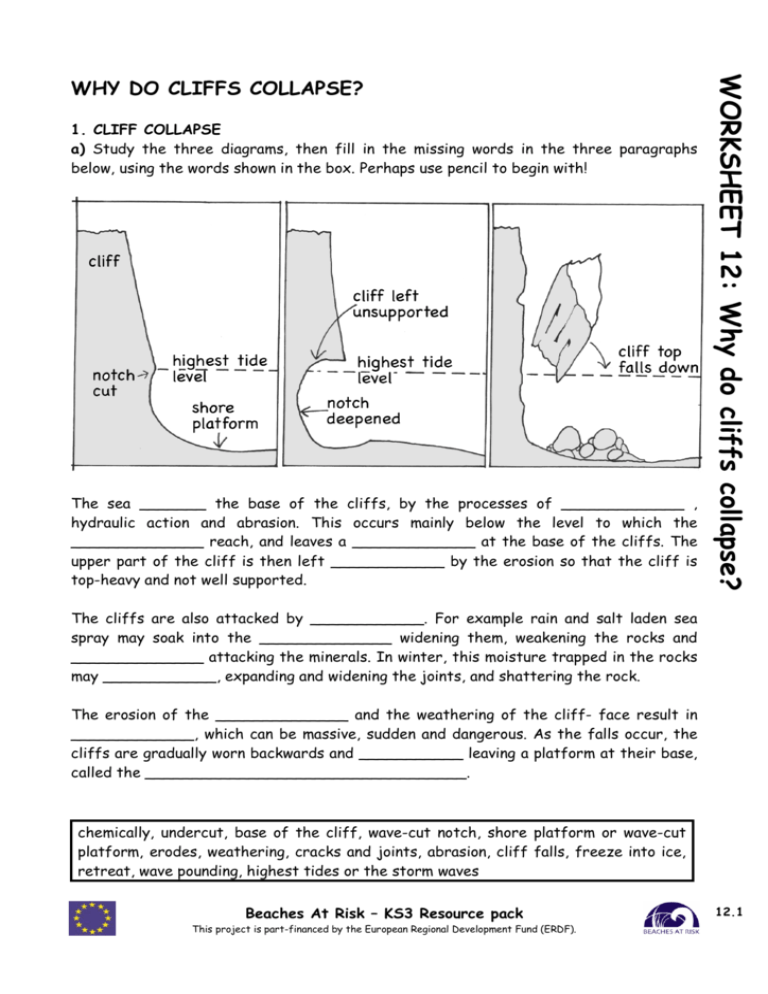
1. CLIFF COLLAPSE a) Study the three diagrams, then fill in the missing words in the three paragraphs below, using the words shown in the box. Perhaps use pencil to begin with! The sea _______ the base of the cliffs, by the processes of _____________ , hydraulic action and abrasion. This occurs mainly below the level to which the ______________ reach, and leaves a _____________ at the base of the cliffs. The upper part of the cliff is then left ____________ by the erosion so that the cliff is top-heavy and not well supported. WORKSHEET 12: Why do cliffs collapse? WHY DO CLIFFS COLLAPSE? The cliffs are also attacked by ____________. For example rain and salt laden sea spray may soak into the ______________ widening them, weakening the rocks and ______________ attacking the minerals. In winter, this moisture trapped in the rocks may ____________, expanding and widening the joints, and shattering the rock. The erosion of the ______________ and the weathering of the cliff- face result in _____________, which can be massive, sudden and dangerous. As the falls occur, the cliffs are gradually worn backwards and ___________ leaving a platform at their base, called the __________________________________. chemically, undercut, base of the cliff, wave-cut notch, shore platform or wave-cut platform, erodes, weathering, cracks and joints, abrasion, cliff falls, freeze into ice, retreat, wave pounding, highest tides or the storm waves Beaches At Risk – KS3 Resource pack This project is part-financed by the European Regional Development Fund (ERDF). 12.1 Diagram 1 Diagram 2 Diagram 3. The water swirls around in the hollow, quickly widening and deepening it, forming a cave. This cave may then be eroded backwards, and, if it is on a headland, it may meet a cave wearing in from the other side. An arch is then formed through the cliff (Diagram 2). Eventually, the top of the arch or bridge collapses, leaving a stack (Diagram 3). This is exposed to erosion on all sides and is worn away and undercut until it collapses, leaving a stump. In time, wave action destroys much of the stump, leaving only its foundation or base well below wave level. WORKSHEET 12: Why do cliffs collapse? 2. CAVES, STACKS, ARCHES AND STUMPS In quite strong rocks that are well jointed such as chalk, rain and seawater may erode some joints and cracks in the rock much more severely than the others, creating a hole or hollow in the cliff face (Diagram 1). This happens particularly on exposed headlands where wave action is very strong. 3. EVOLUTION OF THE CLIFFS AT ETRETAT IN NORMANDY Spectacular examples of caves, arches, stacks and stumps can be seen at Etretat, on the Normandy coast, between Dieppe and Le Havre. a) Study the photograph, IMAGE 3 and add explanatory labels and captions. b) Again adding labels and captions, produce TWO images (IMAGES 1 & 2) to show how this famous stretch of coast may have looked like in the distant past as it evolved into its present shape. Beaches At Risk – KS3 Resource pack This project is part-financed by the European Regional Development Fund (ERDF). 12.2 For IMAGE 1 assume that the coast was originally fairly straight, with few caves and arches. This may have been the situation 5000 years ago. • IMAGE 2 is when the caves were just starting to develop. c) Finally, produce two more images (IMAGES 4 & 5) with labels and captions showing two possible future stages in the evolution of the coast. Remember that increased storminess and higher sea levels are predicted, due to global warming, and will probably accelerate erosion on all coasts. You may wish simply to sketch the images using a pencil or crayons. Alternatively, scan IMAGE 3 into your computer and using Photoshop or some other suitable programme produce the other four images by airbrushing out various parts of the photo or by making additions. Don’t forget to add labels and captions. By morphing the images, you could create a short movie. IMAGE 3 CLIFFS AT ETRETAT Beaches At Risk – KS3 Resource pack This project is part-financed by the European Regional Development Fund (ERDF). WORKSHEET 12: Why do cliffs collapse? • 12.3
